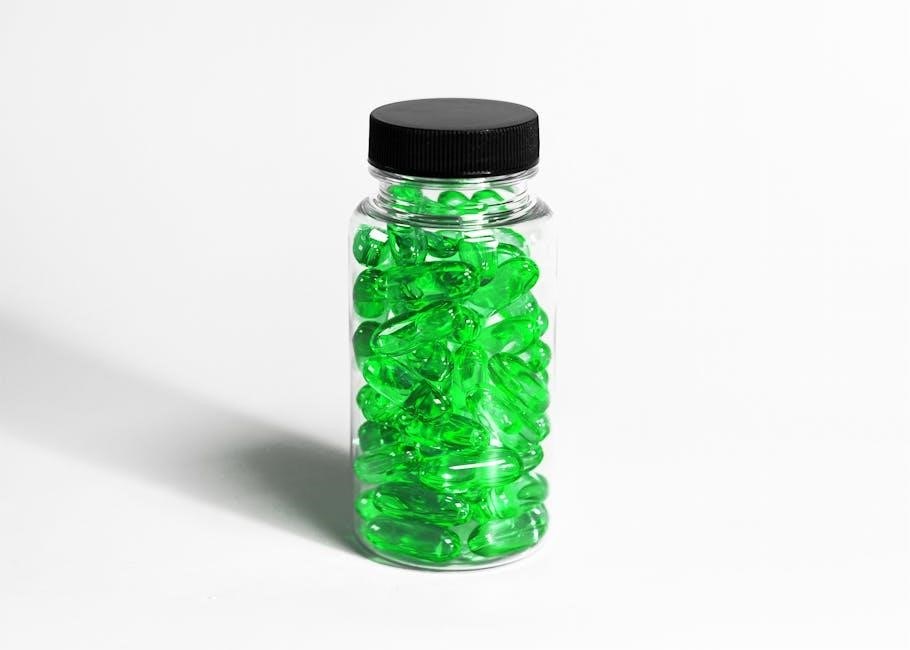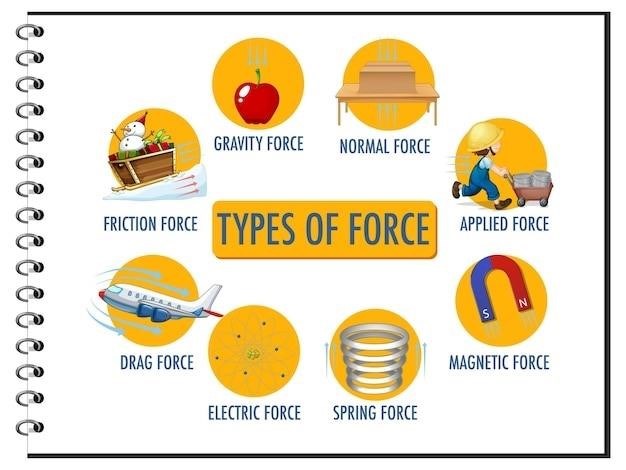The 2025 Guide to Advancement is the official resource for Scouting programs, offering updated policies, clarifications, and digital access to support leaders and Scouts effectively.
1.1 Purpose of the Guide
The Guide to Advancement serves as the official resource for administering advancement in all Scouting programs, including Cub Scouting, Scouts BSA, Venturing, and Sea Scouts. Its primary purpose is to provide clear policies, procedures, and guidelines to ensure consistency and fairness in the advancement process. The guide helps leaders understand requirements, resolve uncertainties, and implement best practices. It also offers updates and clarifications based on feedback from the field, ensuring the advancement process remains relevant and effective. By following the guide, units and councils can support Scouts in achieving their full potential while maintaining the integrity of the advancement system. The 2025 edition emphasizes digital accessibility, making it easier for leaders to access the most current information.
1.2 Scope of the Guide
The Guide to Advancement covers all aspects of advancement for Cub Scouting, Scouts BSA, Venturing, and Sea Scouts. It outlines requirements, policies, and procedures for ranks, awards, and merit badges. The guide addresses age-specific guidelines, such as restrictions on certain activities like welding or ATV usage, ensuring safety and appropriateness. It also clarifies that while units cannot impose age restrictions, council programs may set age requirements for specific activities. Additionally, the guide provides updates on digital tools like Scoutbook for tracking progress and emphasizes the importance of timely recognition. By adhering to the guide, leaders ensure a consistent and fair advancement process across all programs, supporting Scouts’ growth and achievement.
1.3 Importance of the Guide in Scouting Programs
The Guide to Advancement is essential for maintaining consistency and fairness in Scouting programs. It ensures that all Scouts have equal opportunities to progress, regardless of their unit or location. By providing clear guidelines, the guide helps leaders administer advancement processes accurately, reducing confusion and disputes. It also supports safety by outlining age-appropriate requirements for activities like welding or ATV usage. The guide’s digital availability makes it accessible to all leaders, promoting uniform implementation of policies. This consistency fosters trust and motivation among Scouts, knowing that their efforts are recognized and valued equally across all programs. Ultimately, the guide is a cornerstone for delivering a high-quality Scouting experience.

Key Principles of Advancement
The Guide to Advancement emphasizes fairness, consistency, and safety, ensuring Scouts progress based on merit and readiness, with clear, age-appropriate requirements for activities.
2.1 The Advancement Process
The advancement process in Scouting is a structured framework designed to help Scouts progress through ranks by demonstrating skills and knowledge. It begins with basic requirements and builds toward more complex challenges, ensuring a gradual and meaningful journey. Scouts must meet specific criteria for each rank or award, often through hands-on activities, leadership roles, and community service. Safety and age-appropriateness are prioritized, with some activities requiring minimum age restrictions. The process emphasizes personal growth, preparation for life, and character development. Leaders and mentors guide Scouts, ensuring requirements are met fairly and consistently. Digital tools, like Scoutbook, now support tracking progress, making the process more accessible and efficient for all participants.
2.2 Requirements for Advancement
Advancement requirements are standardized across all Scouting programs, ensuring consistency and fairness. Scouts must meet specific criteria for each rank or award, which may include skill demonstrations, leadership roles, and community service. Age restrictions apply to certain activities, such as welding or ATV usage, to ensure safety. The Guide to Advancement outlines these requirements clearly, providing a framework for Scouts to progress. Digital tools like Scoutbook help track progress, while leaders ensure requirements are met accurately. The process emphasizes skill mastery and character development, preparing Scouts for life’s challenges. By following these guidelines, Scouts can achieve meaningful advancement in their journey.
2.3 Flexibility in Advancement
The Guide to Advancement emphasizes flexibility to accommodate Scouts’ diverse needs and circumstances. While requirements are standardized, unit leaders can adapt methods to suit individual Scouts, ensuring inclusivity and accessibility. For example, age restrictions for certain activities, like welding or ATV usage, are implemented by council camp programs to ensure safety. This flexibility allows Scouts to progress at their own pace, balancing consistency with adaptability. The guide encourages creative solutions while maintaining the integrity of advancement standards, ensuring every Scout can achieve their goals. This approach fosters a supportive environment, enabling Scouts to grow and succeed in their unique journeys.
Updates in the 2025 Guide to Advancement
The 2025 Guide to Advancement introduces clarifications, minor changes, and digital availability, enhancing accessibility and understanding for leaders and Scouts across all Scouting programs.

3.1 Significant Changes in the 2025 Edition
The 2025 Guide to Advancement includes notable updates such as clarifications to reduce confusion, based on feedback from the field, and specific changes in Section 1.0.3.0. These adjustments aim to enhance consistency and fairness in advancement processes across all Scouting programs. Additionally, the guide emphasizes that while units cannot impose age restrictions, council camp programs may set age requirements for certain activities like welding or ATV usage. These changes reflect a commitment to adapting Scouting programs to meet the evolving needs of youth and leaders, ensuring a more inclusive and structured advancement experience.
3.2 Clarifications and Revisions
The 2025 Guide to Advancement includes numerous clarifications to address common questions and reduce confusion. These revisions, based on feedback from the field, provide clearer guidance on advancement policies. Key updates include specific changes in Section 1.0.3.0, which focus on ensuring consistency and fairness in advancement processes. Additionally, the guide clarifies that while units cannot impose age restrictions, council camp programs may set age requirements for certain activities, such as welding or ATV usage. These revisions aim to enhance the overall advancement experience, ensuring it aligns with the needs of Scouts and leaders while maintaining the integrity of Scouting programs.
3.3 Digital Availability of the Guide
The 2025 Guide to Advancement is now exclusively available in digital format, accessible via the official Scouting website. This shift to digital ensures timely updates and easy access for leaders and Scouts. The digital version allows for quick searches, cross-referencing, and sharing of information, making it a more practical resource. While a print version is no longer provided, users can download the PDF for local printing if needed. This digital approach aligns with modern preferences and supports the Scouting community in staying informed about the latest advancement policies and procedures efficiently.
Program-Specific Advancement Guidance
The Guide to Advancement provides tailored guidance for Cub Scouting, Scouts BSA, Venturing, and Sea Scouts, ensuring each program’s unique needs are met with clear, adaptable policies.
4.1 Cub Scouting Advancement
Cub Scouting advancement focuses on age-specific activities that promote adventure, learning, and personal growth. The 2025 Guide to Advancement outlines clear policies for Cub Scouts, ensuring consistency and safety. It emphasizes that units cannot impose unnecessary restrictions, while council camps may set age requirements for certain activities, like welding or ATV programs. The guide also highlights the importance of adaptability, allowing leaders to tailor advancement to meet the needs of individual Scouts. By following the guide, Cub Scout leaders can create engaging experiences that foster skill development and character building. The digital availability of the guide ensures easy access for leaders and parents, enhancing program delivery and Scout success.
4.2 Scouts BSA Advancement
The 2025 Guide to Advancement provides detailed guidance for Scouts BSA, ensuring a structured and meaningful progression through ranks. It clarifies policies, such as council camp programs setting age restrictions for activities like welding or ATV usage, to ensure safety and appropriateness. The guide emphasizes consistency in advancement procedures, offering leaders clear guidelines to support Scouts in achieving their goals. Digital access to the guide allows for easy reference, helping leaders and Scouts stay informed and up-to-date. By adhering to the guide, Scouts BSA programs can deliver engaging and challenging experiences that foster growth, skill development, and character building, aligning with the mission of Scouting.
4.3 Venturing and Sea Scouts Advancement
The 2025 Guide to Advancement provides specific guidance for Venturing and Sea Scouts, emphasizing high-adventure and maritime-focused programs. It outlines unique advancement tracks tailored to these programs, ensuring alignment with their specialized goals. The guide clarifies policies, such as age restrictions for certain activities, to ensure safety and appropriateness. Leaders are encouraged to use the guide to support Scouts in achieving advancements that reflect the programs’ emphasis on leadership, skill mastery, and character development. The digital format enhances accessibility, allowing leaders to easily reference policies and procedures. By following the guide, Venturing and Sea Scouts can deliver engaging, challenging, and meaningful experiences that align with Scouting’s mission.

Tools and Resources for Advancement
The 2025 Guide to Advancement highlights tools like Scoutbook for tracking progress, merit badge resources, and council support to streamline advancement processes effectively for all programs.
5.1 Scoutbook for Tracking Advancement

Scoutbook is a powerful digital tool designed to streamline advancement tracking for Scouts, leaders, and parents. It allows users to monitor progress, update requirements, and access real-time records. With features like merit badge tracking, rank advancement, and event logging, Scoutbook ensures accurate and efficient record-keeping. Leaders can approve completed requirements, while Scouts and parents can view progress toward goals. The platform is accessible via web and mobile, making it convenient for everyone involved. Scoutbook integrates seamlessly with council systems, reducing administrative burdens and ensuring compliance with BSA guidelines. Regular updates and tutorials are available to help users maximize its potential, making it an essential resource for modern Scouting programs.
5.2 Merit Badge Programs and Resources
Merit badge programs are a cornerstone of Scouts BSA, offering over 140 badges that foster skills and knowledge in diverse fields. The 2025 Guide to Advancement emphasizes the importance of standardized requirements and proper counselor qualifications to ensure consistency. Units are encouraged to utilize council resources, such as merit badge fairs and counselor lists, to provide Scouts with ample opportunities. Additionally, digital tools like Scoutbook and official BSA publications help track progress and verify requirements. Leaders should ensure that Scouts understand the process and that merit badge counselors are properly trained to maintain the integrity of the program. This ensures a meaningful and enriching experience for all participants.
5.3 Council and Unit Resources

Council and unit resources play a vital role in supporting Scouts and leaders in advancement. Councils often provide camps, trained staff, and materials to facilitate merit badge programs and other activities. Units can access these resources to ensure Scouts have opportunities to earn badges and advance. The 2025 Guide to Advancement highlights the importance of leveraging council-provided tools, such as merit badge counselor lists and program guides, to maintain consistency and quality. Additionally, councils may impose age restrictions for certain activities, like welding or ATV programs, to ensure safety and readiness. These resources help units deliver a well-rounded and engaging Scouting experience, aligning with the guide’s emphasis on standardized advancement practices.
Best Practices for Advancement
Effective advancement requires clear communication, consistent record-keeping, and timely recognition to keep Scouts engaged and motivated throughout their journey.
6.1 Leader Responsibilities
Leaders play a crucial role in guiding Scouts through the advancement process. They must ensure requirements are met, provide mentorship, and maintain accurate records. The 2025 Guide emphasizes that leaders should stay informed about updates and clarifications to administer programs effectively. They are responsible for fostering an environment where Scouts can grow and succeed. Leaders should also utilize tools like Scoutbook for tracking progress and communicate regularly with Scouts and parents. Understanding program-specific rules, such as age restrictions for certain activities, is essential. By staying engaged and informed, leaders can help Scouts achieve their full potential while adhering to BSA guidelines.
6.2 Scout Participation and Engagement
Active participation and engagement are vital for Scouts to thrive in the advancement process. The 2025 Guide to Advancement emphasizes that Scouts should take ownership of their journey, setting personal goals and actively pursuing requirements. Leaders should foster an environment that encourages curiosity, creativity, and perseverance. Scouts benefit most when they are fully engaged in activities, ceremonies, and service projects. Regular interaction with mentors and peers helps build confidence and skills. Tools like Scoutbook can enhance engagement by allowing Scouts to track their progress and stay motivated. Encouraging open communication and celebrating achievements ensures Scouts remain committed to their growth and development. Engagement is key to a meaningful Scouting experience.
6.3 Record-Keeping and Documentation
Accurate and consistent record-keeping is essential for tracking Scout progress and ensuring advancement integrity. The 2025 Guide to Advancement stresses the importance of maintaining detailed records, including requirements completed, dates, and approvals. Digital tools like Scoutbook streamline documentation, providing real-time updates and reducing errors. Leaders must ensure all advancements are properly recorded and verified before submission. Clear documentation also aids in transparency and accountability, ensuring Scouts receive proper recognition for their achievements. Regular audits and backups of records are recommended to prevent data loss. Proper record-keeping not only supports Scouts but also helps units and councils maintain compliance with BSA standards and policies.
Recognition and Awards
Recognition and awards motivate Scouts, celebrating their achievements and fostering a sense of accomplishment. Timely acknowledgment reinforces dedication and progress, encouraging continued growth and engagement in Scouting.
7.1 Types of Recognition
Recognition in Scouting includes merit badges, rank advancements, and Venturing awards, celebrating Scouts’ skills and progress. Ceremonies and celebrations highlight achievements, fostering pride and motivation. Timely acknowledgment reinforces dedication, encouraging continued growth and engagement in Scouting programs.
7.2 Ceremonies and Celebrations
Ceremonies and celebrations are vital for acknowledging Scouts’ achievements, fostering pride, and reinforcing program values. These events, such as court of honor ceremonies or Eagle Scout tributes, provide opportunities to recognize progress and milestones. Units often personalize celebrations to reflect their culture and the significance of advancements. The Guide to Advancement emphasizes the importance of meaningful recognition, ensuring Scouts feel valued for their efforts. Ceremonies also inspire others to strive for similar accomplishments, creating a motivational environment within the unit. By celebrating successes, Scouting programs strengthen camaraderie and reinforce the importance of perseverance and growth.

7.3 Importance of Timely Recognition
Timely recognition is crucial for maintaining Scouts’ motivation and engagement. Delays in acknowledging achievements can diminish their significance and impact. The Guide to Advancement emphasizes that prompt recognition reinforces the value of efforts and progress, fostering a sense of accomplishment. Leaders should prioritize celebrating milestones as they occur to keep Scouts inspired and focused on their goals. Recognition also serves as a powerful tool for reinforcing Scouting values and encouraging continued participation. By ensuring timely acknowledgment, units can strengthen morale, build confidence, and create lasting memories for Scouts. The 2025 Guide provides updated guidance to help leaders implement effective and meaningful recognition practices consistently.

Challenges and Solutions in Advancement
Challenges like inconsistent standards and coordination issues can hinder advancement. Solutions include clear guidelines, training, and digital tools to ensure consistency and support for Scouts and leaders.
8.1 Common Challenges in Advancement
Common challenges in advancement include inconsistent merit badge standards, lack of coordination among leaders, and varying council restrictions. Scouts may face limited opportunities due to age or program constraints. Additionally, the loose structure of the merit badge program can lead to confusion and differing expectations. Leaders often struggle with accountability and ensuring fairness in advancement processes. These issues highlight the need for clear guidelines and better communication to support Scouts and leaders effectively. Addressing these challenges is crucial for maintaining the integrity and consistency of the advancement system across all Scouting programs.
8.2 Strategies for Overcoming Obstacles

Effective strategies for overcoming advancement obstacles include providing consistent training for leaders, improving communication, and leveraging digital tools like Scoutbook. Clarifying policies and ensuring transparency can reduce confusion. Encouraging collaboration between units and councils helps align standards and expectations. Offering flexible advancement opportunities, such as virtual merit badge sessions, can address accessibility issues. Leaders should also focus on mentorship and fostering a growth mindset among Scouts. By addressing root causes and implementing practical solutions, units can create a more equitable and efficient advancement process, ensuring Scouts can thrive and reach their full potential.
8.3 Role of Mentors and Coaches
Mentors and coaches play a vital role in guiding Scouts through the advancement process. They provide personalized support, helping Scouts understand requirements and demonstrate skills. By offering constructive feedback and encouragement, mentors foster confidence and growth. Coaches also ensure Scouts meet standards fairly and consistently, resolving disputes when needed. Their expertise helps Scouts navigate challenges and achieve milestones. Effective mentorship also involves leveraging resources like Scoutbook for tracking progress. Mentors and coaches are instrumental in celebrating successes and addressing areas for improvement, ensuring Scouts stay motivated and engaged throughout their journey. Their dedication is key to fostering a positive and productive advancement experience.

Conclusion and Future Outlook
The 2025 Guide to Advancement underscores continuous improvement, digital accessibility, and lifelong learning, empowering Scouts and leaders for future success in Scouting programs nationwide.
9.1 Summary of Key Points
The 2025 Guide to Advancement is the official resource for Scouting programs, providing updated policies and clarifications to ensure consistency and fairness. It emphasizes digital accessibility, with the guide available online as a PDF, eliminating the need for a print version. Key updates include adjustments to age requirements for certain activities and clear guidelines to reduce confusion. The guide supports all Scouting programs, including Cub Scouting, Scouts BSA, Venturing, and Sea Scouts. It underscores the importance of continuous improvement, offering tools like Scoutbook for tracking progress. By focusing on flexibility and clear communication, the guide aims to enhance the Scouting experience for both youth and leaders nationwide.
9.2 Continuous Improvement in Advancement
The 2025 Guide to Advancement reflects a commitment to continuous improvement, incorporating feedback from leaders and Scouts to refine policies and practices. Regular updates ensure the guide remains relevant, addressing evolving needs and clarifying ambiguities. By prioritizing digital accessibility, the guide allows for real-time updates, keeping users informed of the latest advancements. This iterative approach fosters a culture of adaptability, enabling Scouting programs to grow and thrive. The guide’s focus on flexibility and clear communication supports ongoing development, ensuring advancement processes remain effective and engaging for all participants.
9.3 Encouraging Lifelong Learning and Growth
The Guide to Advancement emphasizes fostering a mindset of continuous learning and personal growth. By providing clear pathways for skill development and achievement, it encourages Scouts to embrace challenges and pursue excellence. The guide’s focus on adaptability and resilience prepares youth for lifelong success. Leaders are empowered to create engaging programs that nurture curiosity and creativity, ensuring Scouts develop skills that extend beyond their time in Scouting. The 2025 edition’s digital format ensures accessibility, keeping Scouts and leaders informed and motivated. This approach not only builds character but also equips Scouts with the confidence and skills to thrive in an ever-changing world.



























